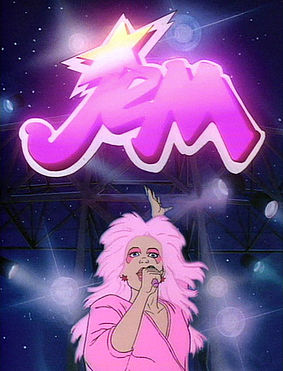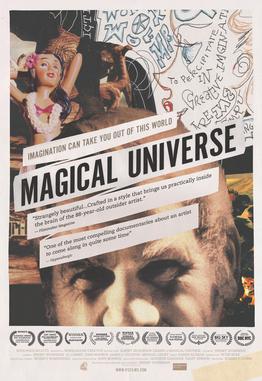Related Research Articles

Mattel, Inc. is an American multinational toy manufacturing and entertainment company headquartered in El Segundo, California. Mattel has a presence in 35 countries and territories; its products are sold in more than 150 countries. Mattel was founded in Los Angeles by Harold Matson and the husband-and-wife duo of Ruth and Elliot Handler in January 1945.

Barbie is a fashion doll created by American businesswoman Ruth Handler, manufactured by American toy and entertainment company Mattel and introduced on March 9, 1959. The toy was based on the German Bild Lilli doll which Handler had purchased while in Europe. The figurehead of an eponymous brand that includes a range of fashion dolls and accessories, Barbie has been an important part of the toy fashion doll market for over six decades. Mattel has sold over a billion Barbie dolls, making it the company's largest and most profitable line. The brand has expanded into a multimedia franchise since 1984, including video games, animated films, television/web series, and a live-action film.

Kenneth Sean "Ken" Carson Jr. is a fashion doll introduced by American toy company Mattel in 1961 as the counterpart of Barbie, who had been introduced two years earlier.

Jem and The Holograms, also known as simply Jem, is an American animated musical television series that ran from 1985 to 1988. The series is about record company owner Jerrica Benton, her singer alter-ego Jem, and the adventures of her band Jem and The Holograms. The series was a joint collaboration by Hasbro, Sunbow Productions and Marvel Productions, the same team responsible for G.I. Joe and Transformers. The creator of the series, Christy Marx, had also been a staff writer for the aforementioned programs. The animation for most of the episodes was provided by Japanese animation studio Toei Animation. Eleven episodes and the opening sequence were instead provided by the South Korean studio AKOM.

Mark Ryden is an American painter who is considered to be part of the Lowbrow art movement. He was dubbed "the god-father of pop surrealism" by Interview magazine. In 2015, Artnet named Ryden and his wife, painter Marion Peck, the king and queen of Pop Surrealism.
Since Barbie's introduction as a teenage fashion model in 1959, the doll has been portrayed with many careers. Dolls are sold with sets of clothes and accessories that fit the career being portrayed. For example, the Lifeguard Barbie playset includes a Barbie, an outfit with shoes, a lifeguard chair, a dolphin, and a life preserver, while the Spanish Teacher Barbie includes a Barbie, an outfit with shoes, flashcards, a Spanish quiz, an easel, a notebook, a key chain, and a hairbrush.
American Girl is an American line of 18-inch (46 cm) dolls released on May 5, 1986, by Pleasant Company. The dolls portray eight- to fourteen-year-old girls of various ethnicities, faiths, nationalities, and social classes throughout different time periods throughout history. They are sold with accompanying books told from the viewpoint of the girls. Originally the stories focused on various periods of American history, but were expanded to include characters and stories from contemporary life. Aside from the original American Girl dolls, buyers also have the option to purchase Truly Me dolls, which vary by eye color, face mold, skin color, hair texture, and hair length. A variety of related clothing and accessories is also available. A service for ordering a custom-made doll with features and clothing specified by the owner dubbed Create Your Own, was introduced in 2017.

Fashion dolls are dolls primarily designed to be dressed to reflect fashion trends. They are manufactured both as toys for children to play with and as collectibles for adults. The dolls are usually modeled after teen girls or adult women, though child, male, and even some non-human variants exist. Contemporary fashion dolls are typically made of vinyl or another plastic.

A ball-jointed doll is any doll that is articulated with ball and socket joints. In contemporary usage when referring to modern dolls, and particularly when using the acronyms BJD or ABJD, it usually refers to modern Asian ball-jointed dolls. These are cast in polyurethane synthetic resin, a hard, dense plastic, and the parts strung together with a thick elastic. They are predominantly produced in Japan, South Korea and China. The BJD style has been described as both realistic and influenced by anime. They commonly range in size from about 60 centimetres (24 in) for the larger dolls, 40 cm (15.5 in) for the mini dolls, and down to 10 cm (4 in) for the very smallest BJDs. BJDs are primarily intended for adult collectors and customizers. They are made to be easy to customize, by painting, changing the eyes and wig, and so forth.
Fulla is the name of an 11.5 in (290 mm) Barbie-like fashion doll marketed to children of Islamic and Middle-Eastern countries as an alternative to Barbie. The product's concept evolved around 1999, and it became available for sale in late 2003. Fulla was created by a Syrian manufacturer called NewBoy FZCO. In 2015, the company moved to the United Arab Emirates and is now located in Dubai. Fulla was also sold in China, in Brazil, North Africa, Egypt, and Indonesia, while a few were sold in the United States. Although there had been many other dolls in the past that were created with a hijab, such as Razanne and Moroccan Barbie, Fulla surpassed them in popularity due to launching alongside a marketing campaign aired on the popular Arabic television channel Spacetoon. Fulla was a role-model to some Muslim people, displaying how many Muslim parents would prefer their daughters to dress and behave.
Isadore Elliot Handler was an American inventor, business magnate, and the co-founder of Mattel. With his wife, Ruth Handler, he developed some of the biggest-selling toys in American history, including Barbie, Chatty Cathy, Creepy Crawlers, and Hot Wheels.

"Barbie Girl" is a song by Danish-Norwegian dance-pop group Aqua. It was released in April 1997 by Universal and MCA as the third single from the group's debut studio album, Aquarium (1997). The song was written by band members Søren Rasted, Claus Norreen, René Dif, and Lene Nystrøm, and was produced by the former two alongside Johnny Jam and Delgado. It was written after Rasted saw an exhibit on kitsch culture in Denmark that featured Barbie dolls. The accompanying music video was directed by Danish directors Peder Pedersen and Peter Stenbæk.
The Museum of Lifestyle & Fashion History is a non-profit organization located in Palm Beach County, Florida. Currently the museum is seeking a permanent location.
Mdvanii was originally conceived as a conceptual art and fashion doll for adults by artist BillyBoy*. Since 1990, it has been a collaboration with his life partner, artist Jean Pierre Lestrade. The 25-centimetre (9.8 in) tall doll was originally made in a matte Caron make-up toned hard resin. Mdvanii debuted on February 14, 1989 in London, England.
LaVonne Salleé is an American artist who is best known for her work with altered Barbie dolls. Like many conceptual artists, she uses materials not usually perceived as artistic in nature. She uses found object methods and a variety of craft skills to accrue her pieces of recycled art.
Jason Freeny is an American artist specializing in sculpture, designer toys and computer-generated imagery. He is the owner of the Moist Production studio, which acts as the primary publisher and distributor of his works. He is best known for his anatomical art, where he produces cutaway drawings and sculptures of inanimate objects such as a Lego man, Barbie doll, the animated fish Nemo or a balloon art dog.

Valeria Valeryevna Lukyanova is a Ukrainian model best known for her resemblance to a Barbie doll. She currently lives in Mexico. To enhance the Barbie effect Lukyanova uses makeup and contact lenses over her naturally green/gray/blue eyes. She has stated that she has had breast implants, but that the rest of her body is natural and slender due to daily gym workouts and a particular diet.

Narcissister is an American, Brooklyn-based, feminist performance artist, born of Moroccan Jewish and African-American descent. Narcissister's work tends to focus on race, gender, and sexuality, using her slight anonymity to explore such topics controversially. In February 2013, she headlined her first solo gallery. She was a contestant on America's Got Talent in 2011. The Huffington Post declared her the "topless feminist superhero of New York". She prefers her identity remain secret.

Magical Universe is a 2013 documentary film directed by filmmaker Jeremy Workman about reclusive outsider artist Al Carbee who created elaborate dioramas and collages featuring Barbie dolls. The title of the film is taken from Carbee's own voluminous writings about his wondrous art.
References
- ↑ Berg, Jeff (January 2011). "Un-Living Dolls". Desert Exposure. Retrieved 2013-11-18.
- ↑ "Artists Give Barbie Cosmetic Surgery". SF Weekly. October 27, 2011. Retrieved 2015-02-26.
- 1 2 "Christy Lou". Alteredbarbie.com. Retrieved 2014-06-11.
- ↑ Corpsy. "Dolls of the Dead: Giving your Kids Nightmares For A Lifetime". Girlsandcorpses.com. Retrieved 2013-11-18.
- ↑ "Christy Lou Sexton". Paraphilia Magazine. Internet Archive Wayback Machine. November 2, 2009. Archived from the original on 2010-06-08. Retrieved 2014-06-11.